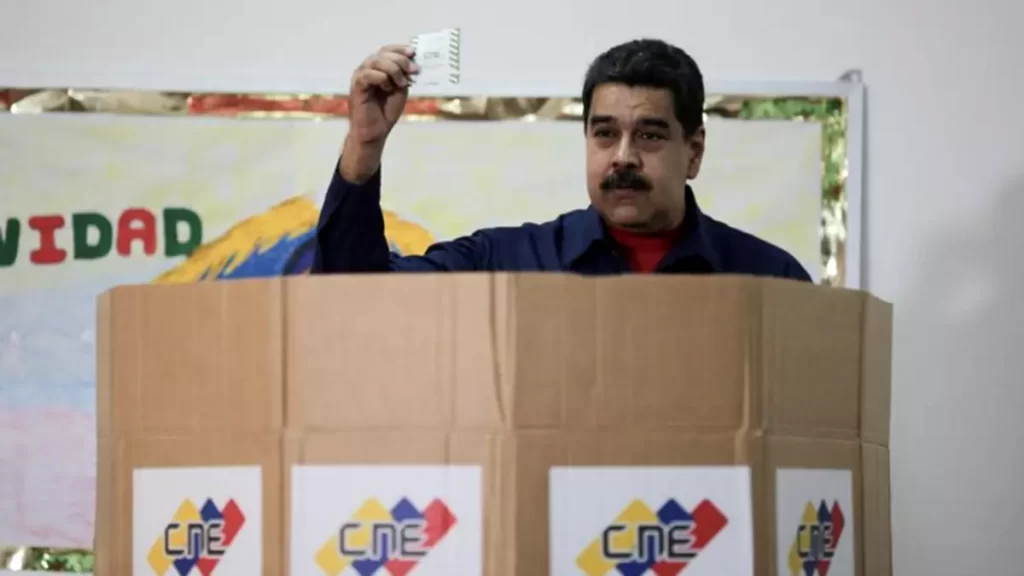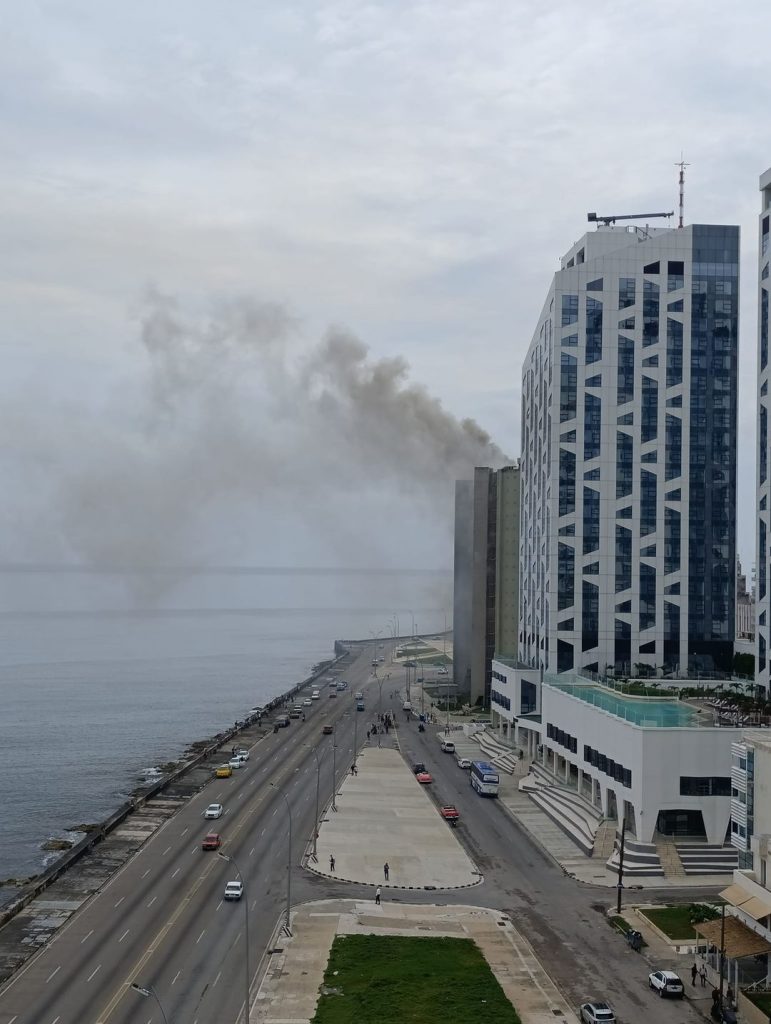They accuse “enemy platforms of sowing hatred” on social networks

![]() 14ymedio, Madrid, 28 June 2024 — State TV’s Round Table program convened a group of Cuba’s senior officials on Thursday to talk about violence and insecurity, two of the concerns that have emerged most strongly among citizens in recent years. The cast of guests included Colonel Eddy Sierra Arias, head of the General Police Directorate; Miriam Marbán González, first deputy comptroller general; Marcos Caraballo de la Rosa, deputy attorney general of the Republic; and Maricela Sosa Ravelo, vice president of the Supreme Court of Justice.
14ymedio, Madrid, 28 June 2024 — State TV’s Round Table program convened a group of Cuba’s senior officials on Thursday to talk about violence and insecurity, two of the concerns that have emerged most strongly among citizens in recent years. The cast of guests included Colonel Eddy Sierra Arias, head of the General Police Directorate; Miriam Marbán González, first deputy comptroller general; Marcos Caraballo de la Rosa, deputy attorney general of the Republic; and Maricela Sosa Ravelo, vice president of the Supreme Court of Justice.
Having lost the monopoly on information and exposed the security problems that also affect the island, the authorities have had to face the facts and admit that Cuba is not as safe as they have been saying it is for decades.
Transparency, but not too much, thinks the Police, which has recently opted for the technique of providing on television the percentages of crimes tried – but not those reported – without offering the total figures. Thus, Caraballo de la Rosa broke down the data on cases punished on Thursday, namely: 94% of those accused of gender violence [femicide] were sentenced to more than 25 years in prison. continue reading
It is known that there were 182 restraining orders and 14 suspensions of custody of minors from these crimes
Of these crimes, it is known that there were 182 restraining orders and 14 suspensions of custody of minors. There was also a specific figure when talking about corruption: 122 cases resulted in a ban on working in the affected sector. “We have also confiscated cars and houses and carried out twelve exemplary trials. There are 702 people sanctioned with sentences that do not involve confinement who have had this measure revoked, based on the control actions that we also carried out to apply the greatest possible justice,” added Sosa Ravelo.
These were the sparsely significant figures offered, because the rest were again percentages. Of those accused of any crime 96% are punished, which proves to the judge how well investigations are carried out. Of “the most serious crimes” 78% are held in custody, she added, although she did not specify whether she was referring to violent or economic crimes, and it is even more complicated to determine the kind of people who make up the remaining 22% who are free. She did point out that in human trafficking and gender-based violence the rate of imprisonment is 100% and, without giving a reason why, the rate is 98% for murders.
Other percentages of detentions that Sosa Ravelo provided, in a useless barrage of figures, were those for drug trafficking (95%), robbery with violence and corruption of minors (94%), theft and slaughter of cattle (91%) and currency trafficking (90%). Only 18% of the accused leave the court with “alternative measures” and 4% with fines, despite which, Sierra Arias insisted widely that the Police apply a preventive approach and not just a punitive one.
The weight of the program fell on the head of the General Police Directorate, who tried hard to defend that “the blockade has an impact on daily life” and affects crime. Eddy Sierra Arias is, it should be remembered at this point, sanctioned by the US State Department for his role in the repression of ’11J’, the 11 July 2021 Island wide mass protests.
The official offered an extensive dissertation on the various crimes that affect Cuba, which are, as in most countries, economic, violent or drug trafficking, with the exception of some more indigenous ones: those committed against livestock. In this sense, he extended the responsibility also to the producers themselves, warning of the number of falsifications of records and violations of the norms that have come to light during the livestock census.
There are “manifestations of social indiscipline, derived from the breakdown of values in society in some sectors of the population
Sierra Arias warned that there are “manifestations of social indiscipline, derived from the breakdown of values in society in some sectors of the population,” an issue that needs to be addressed. Thus, he highlighted that there is an “issue that is vital”: the impact of social networks “on the intention and on the use that is often given to them, aimed at generating a state of aggravation, of insecurity.” He blamed the “enemy platforms” for this and asked the population to be aware to combat it.
“They seek to spread hatred, to make the population reject the agents of authority, especially the police authorities, to fragment that unity between the people and our institution that is an essential bulwark for this fight,” he alleged. He did not specify what he meant by the actions they have carried out to “contain a group of priority figures,” although it can be assumed that he was referring both to the policy of disseminating the regime’s own messages – through accounts such as Fuerza del Pueblo [People Power] – and the application of laws that punish criticism of the Government expressed through mere interaction on social networks.
Less interesting were the comments from the Deputy Attorney General of the Republic, who only participated to proclaim the guarantees of the Cuban legal system, but the first deputy comptroller offered one of the notable phrases of the night. Miriam Marbán González said that “the battle in the prevention and confrontation of indiscipline, illegalities and corruption is led by the Party,” a few days after one of the most recent cases of embezzlement came to light, which has completely destroyed the municipal food company in Guantánamo.
The official indicated that between 20% and 30% of the control operations carried out have a “deficient or bad” result and revealed that priority is given to the inspection of businesses that have foreign investment, although state companies are also reviewed by sector, as will be done in September and October in tourism, including suppliers.
“There is a deterioration in the ethical values of people who engage in this type of conduct. There is poor self-control in these entities and a lack of supervision at administrative levels,” she said. However, she alleged that in more than 76% of cases, harsh disciplinary measures are applied, such as “separation from the sector.” “When an alleged criminal act is detected, a special report is prepared and submitted to the competent bodies of the Ministry of the Interior and the Prosecutor’s Office. There is no impunity,” she said.
Remaining on everyone’s mind was the former Minister of Economy and Planning, Alejandro Gil, whose situation remains a mystery.
____________
COLLABORATE WITH OUR WORK: The 14ymedio team is committed to practicing serious journalism that reflects Cuba’s reality in all its depth. Thank you for joining us on this long journey. We invite you to continue supporting us by becoming a member of 14ymedio now. Together we can continue transforming journalism in Cuba.


















